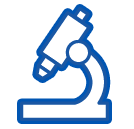Fiche publication
Date publication
décembre 2016
Journal
Human mutation
Auteurs
Membres identifiés du Cancéropôle Est :
Pr FAIVRE Laurence
Tous les auteurs :
Pinard A, Salgado D, Desvignes JP, Rai G, Hanna N, Arnaud P, Guien C, Martinez M, Faivre L, Jondeau G, Boileau C, Zaffran S, Béroud C, Collod-Béroud G
Lien Pubmed
Résumé
High-throughput next-generation sequencing such as whole-exome and whole-genome sequencing are being rapidly integrated into clinical practice. The use of these techniques leads to the identification of secondary variants for which decisions about the reporting or not to the patient need to be made. The American College of Medical Genetics and Genomics recently published recommendations for the reporting of these variants in clinical practice for 56 "actionable" genes. Among these, seven are involved in Marfan Syndrome And Related Disorders (MSARD) resulting from mutations of the FBN1, TGFBR1 and 2, ACTA2, SMAD3, MYH11 and MYLK genes. Here, we show that mutations collected in UMD databases for MSARD genes (UMD-MSARD) are rarely reported, including the most frequent ones, in global scale initiatives for variant annotation such as the NHLBI GO Exome Sequencing Project (ESP), the Exome Aggregation Consortium (ExAC), and ClinVar. The predicted pathogenic mutations reported in global scale initiatives but absent in locus-specific databases (LSDBs) mainly correspond to rare events. UMD-MSARD databases are therefore the only resources providing access to the full spectrum of known pathogenic mutations. They are the most comprehensive resources for clinicians and geneticists to interpret MSARD-related variations not only primary variants but also secondary variants.
Mots clés
Cardiovascular Diseases, genetics, Exome, Genetic Predisposition to Disease, Genome, Human, Genomics, methods, High-Throughput Nucleotide Sequencing, methods, Humans, Knowledge Bases, Mutation
Référence
Hum. Mutat.. 2016 12;37(12):1308-1317






